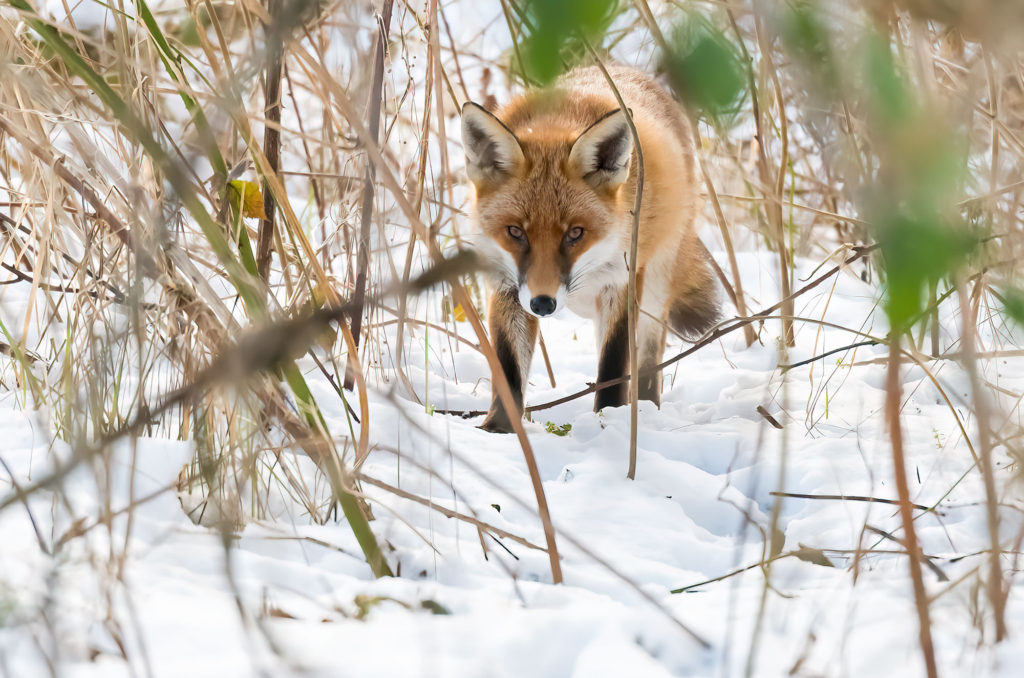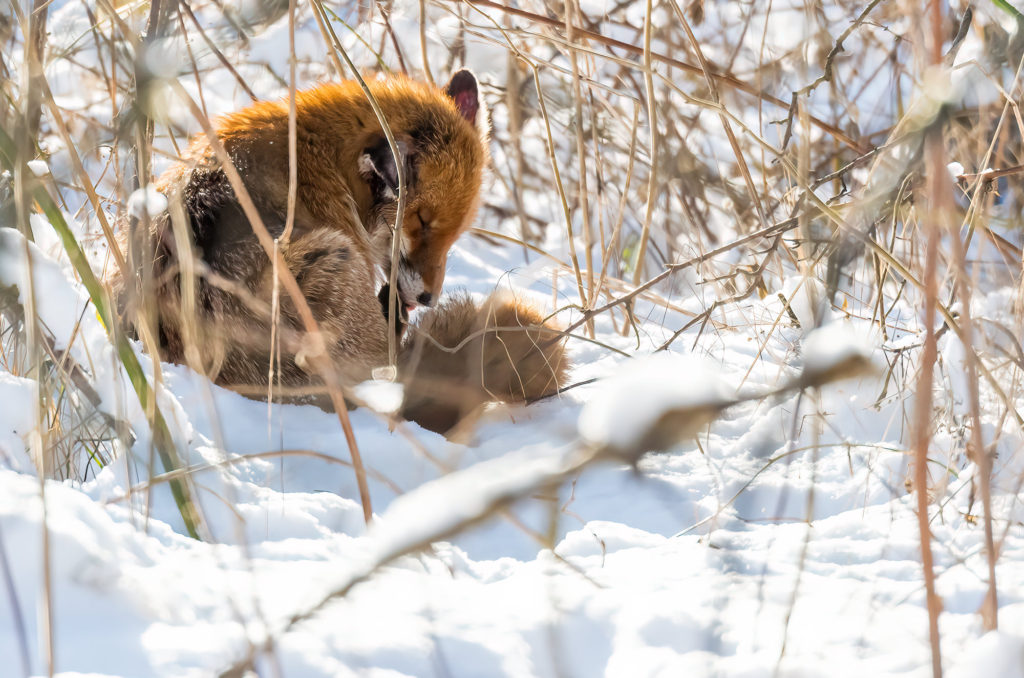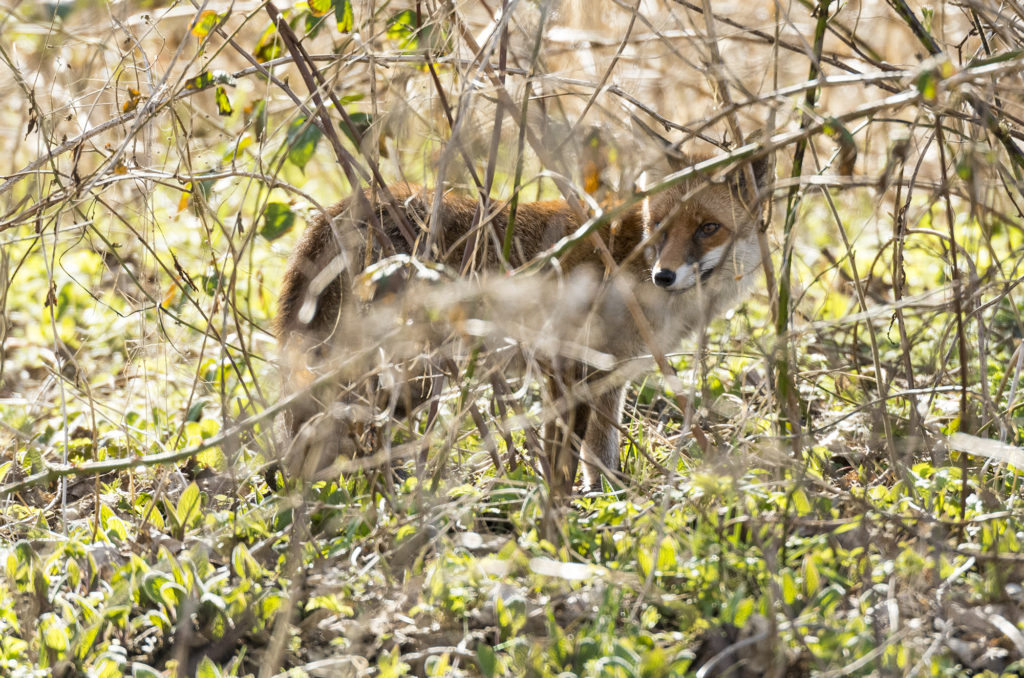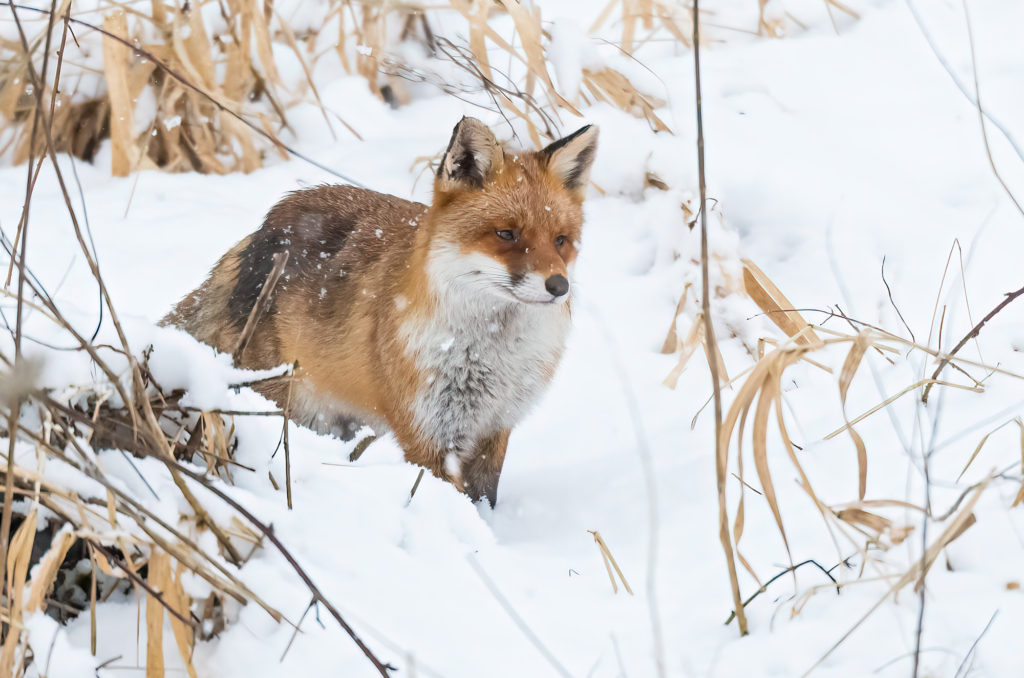Discovering foxes strolling about in daylight a stone’s throw from my flat has been a highlight of lockdown. I just wish that the spring vegetation wasn’t growing up so quickly around them.
Foxes may be a common subject for wildlife photographers, but I had given up all hope of working on an urban foxes photography project. I have long held the desire to work with foxes as they are one of my favourite mammals. When I lived in south London ten years ago, it seemed like the perfect project for a budding wildlife photographer to get stuck into; you know that they live on your doorstep and are used to people. I even managed to get a couple of not great shots of one on a shed roof at the end of a neighbouring garden. Still, I held back from embarking on a fox project and stuck to corvids instead. I didn’t want to admit it to anyone – or myself – at the time, but I was scared. Although it is not unusual to see foxes during the day, particularly in urban areas, foxes are crepuscular, meaning they are most active around dawn and dusk. I didn’t feel comfortable wandering around the streets with only my camera for company, especially after dark. I was worried about my safety and my gear getting taken from me or damaged. I also had no idea where to start in terms of a reliable location and knew that questions might be asked if I was spotted snooping up and down near people’s homes at any time of day or night. It just felt like too much could go wrong, so I parked the idea.
Persistence pays off
If you are a regular reader of my blogs and Instagram posts, you will know I spent the autumn and winter months getting to know my local patch, and it has been full of surprises. You may also be aware that I had a fleeting encounter with a fox in a local park back in early February. Despite this, I did not expect to discover foxes making regular appearances during the day just a couple of minutes walk away from our flat.
I first spotted them during the heavy snow we had in February. I could not believe my luck and convinced myself that this was a one-off encounter. Then there came more, the deep snow making the flash of copper fur in the distance easier to spot.

The images from these wintry encounters demonstrate the value of stopping and waiting, even if just for an hour. If you are time-limited most days, like I am, please don’t be disheartened. I captured these images on working days during my daily walks. Except I spent this hour standing rather than walking. The key is to spend time on your local patch as often as possible, even if the time you can spend there is short. By showing up in the same spots, I have taken advantage of opportunities that would not have otherwise presented themselves. Some days I will stand in my usual place and listen to the birds calling and dogs barking in the distance and not see anything, but I will always come away feeling revived and relaxed. Other times I will watch for the foxes and be treated to the buzzards soaring above my head. Then there are those magical days with moments such as these.

The clean shot challenge
I captured all the images on this page standing in the open on the opposite side of a river. The snow made it easy to get a clean shot but, without the white carpet to weigh down the masses of tall grass on the river bank, locking focus on the foxes through the spring vegetation has become difficult. I also have to stand behind a fence, so moving to get a better view of my subject is not always possible. I am learning to accept that there will be many occasions where I will check my images to find I have locked focus on the grass hanging in front of one of my fantastic new friends or, more often, the light patch of grass just behind them.

They are also very shy and are aware when they are being watched, so I have to be quite sneaky about photographing them as there is no way I can conceal myself. Some days they tolerate me; other times they head back into the undergrowth. I am working hard to gain their trust from a distance. I am also trying to anticipate their movements and routes along the bank, so I am as prepared as I can be to get the images I want, but I know that most visits I make will end without usable images.
Identifying individuals
To help with anticipating their behaviour, I have also set up a trail camera to look at what they get up to when I am not around. The video footage, along with my images, is also allowing me to identify and sex individuals. More on that to come soon though, from what I have been able to gather already, I am doubtful that I will be seeing any cubs from these foxes this year. I hope I am wrong about this, but I will keep you posted.
If you are lucky enough to have foxes breeding in your area, the cubs should start to appear above ground near the end of this month. This will coincide with them starting to eat solid food. If you discover an earth (breeding den), keep your distance from it to avoid disturbing the cubs and the vixen. I would love to hear if you have seen young foxes in your area.
I will also be posting some video footage on here and my new YouTube channel in the coming weeks, so please check back if you enjoy watching foxes chewing on old shoes!

Since capturing the first wintry images, I have managed to spend many minutes enchanted by these foxes, whether viewing them through my lens or checking out the videos of their antics on my laptop. Whatever happens with this project from a photography perspective, I am delighted to see these fantastic mammals in broad daylight on my local patch.

